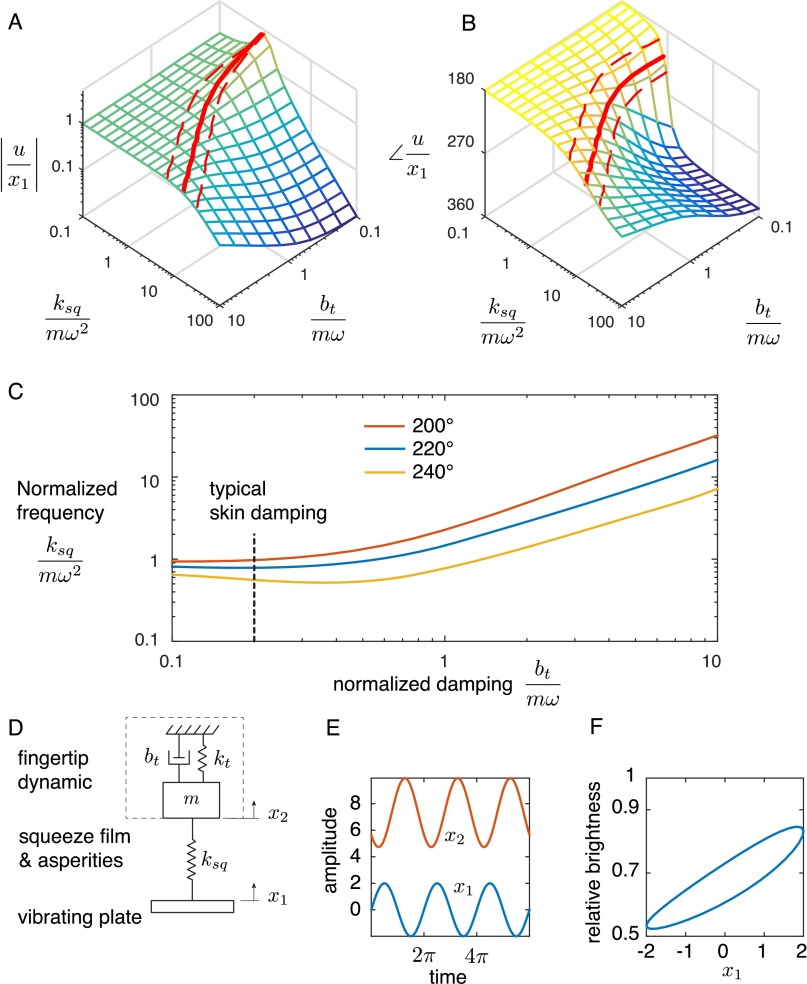Fig. S4.
Dynamics of the gap u as modeled by a second-order system excited with an elastic squeeze film . (A) Relative amplitude and (B) relative phase of the variation of the gap with respect to the vibration of the plate for a set of squeeze film springs and different skin dissipation . Each parameter is normalized to the impedance of the inertia. The thick red lines show the locus for which the phase difference is 220°, and the dashed lines represent a 20° tolerance. (C) Locus of squeeze film stiffness and skin damping values for which the phase of the gap with respect to the plate motion corresponds to the experimental data (i.e., from 200° to 240°). There is almost no sensitivity to normalized damping for values lower than 0.5, which highlights the robustness to variation in skin properties. (D) Illustration of the model. (E) Model prediction of the movement of the plate. (F) Estimated relative brightness, which matches relatively well the experimental data in Fig. 4, despite the assumption of linear dynamics.

